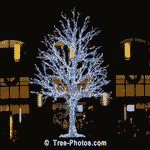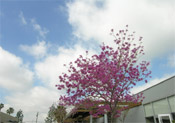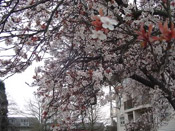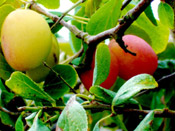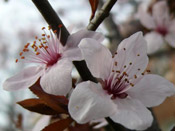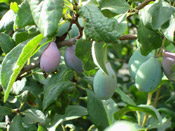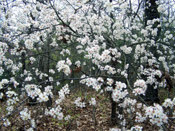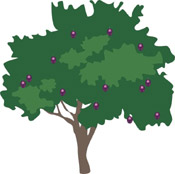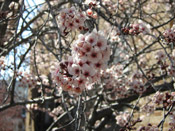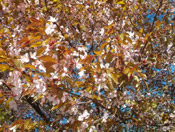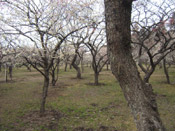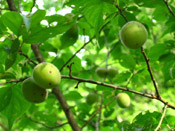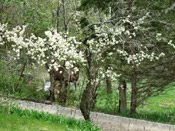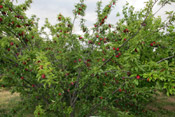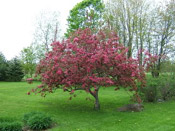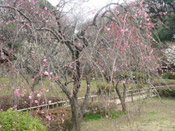Plum Tree Pictures
Welcome to our plum tree pictures page.
On this page you will find lots of nice pictures of plum trees.
You will also find a lot of wonderful information on plum trees, including information about the plum tree species, planting information, and much more.
This is valuable and useful information that can help you to learn more about the plum tree.
To view each plum tree picture in full size just click on the pictures.
Enjoy these pictures of the plum tree and tasty plum fruit.
Plum Tree Picture Gallery
Plum Tree In Bloom |
Plum Blossom |
Plums |
Here is some general information on the plum tree.
A plum or gage is a stone fruit tree in the genus Prunus, subgenus Prunus. The subgenus is distinguished from other subgenera (peaches, cherries, bird cherries, etc.) in the shoots having a terminal bud and the side buds solitary (not clustered), the flowers in groups of one to five together on short stems, and the fruit having a groove running down one side and a smooth stone (or pit).
Mature plum fruit may have a dusty-white coating that gives them a glaucous appearance and is easily rubbed off. This is an epicuticular wax coating and is known as "wax bloom". Dried plum fruits are called dried plums or prunes, although prunes are a distinct type of plum, and may have pre-dated the fruits now commonly known as plums.
Plum fruit tastes sweet and/or tart; the skin may be particularly tart. It is juicy and can be eaten fresh or used in jam-making or other recipes. Plum juice can be fermented into plum wine; when distilled, this produces a brandy known in Eastern Europe as Slivovitz. In central England, a cider-like alcoholic beverage known as plum jerkum is made from plums.
Dried plums (or prunes) are also sweet and juicy and contain several antioxidants. Plums and prunes are known for their laxative effect. This effect has been attributed to various compounds present in the fruits, such as dietary fiber, sorbitol, and isatin. Prunes and prune juice are often used to help regulate the functioning of the digestive system. Dried prune marketers in the United States have, in recent years, begun marketing their product as "dried plums". This is due to "prune" having negative connotations connected with elderly people suffering from constipation.
When it flowers in the early spring, a plum tree will be covered in blossom, and in a good year approximately 50% of the flowers will be pollinated and become plums. Flowering starts after 80 growing degree days.
If the weather is too dry the plums will not develop past a certain stage, but will fall from the tree while still tiny green buds, and if it is unseasonably wet or if the plums are not harvested as soon as they are ripe, the fruit may develop a fungal condition called brown rot. Brown rot is not toxic, and very small affected areas can be cut out of the fruit, but unless the rot is caught immediately the fruit will no longer be edible.
Copyright © 2011 Tree Pictures Online.com All rights reserved. Reproduction in whole or in part in any form or medium without express written permission of Tree Pictures Online.com is prohibited.
Ancient Symbols Anti Gravity Make Money With Autoresponders Communicate With God Connect and Contact Fall Pictures Free Energy Impacts of Global Warming Instant Wealth System Exchange Links Make Electricity Money Video Affiliate Sales Only 30 Minutes a Day Perpetual Motion Pictures of Winter Alien Pictures Tesla Secret Tree Pictures Waterfall Pictures Work at Home Jobs
![]()


